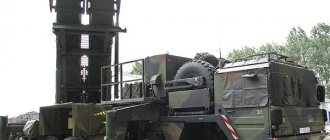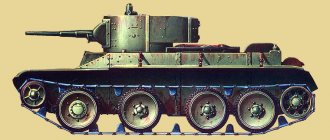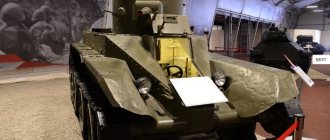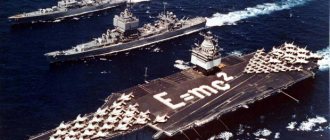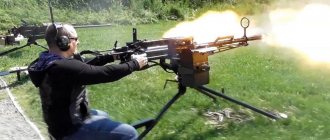Weapons, events, sports and news from everywhere
source: mixednews.ru
The game is on in Saudi Arabia, and the winner will receive arms deals worth millions and even billions.
Russian President Vladimir Putin will begin his visit to Saudi Arabia, which suffered an attack on its oil facilities a month ago.
And he clearly intends to advance Russia's missile defense system.
How different are these systems from those currently used by Saudi Arabia?
Attacks on oil facilities in the Saudi regions of Khurais and Abqaiq on September 14 deprived the country of approximately half of its oil production in one day.
The operation allegedly used Iranian-made cruise missiles and drones to penetrate the defenses of Saudi Arabia's military, including Patriot missile defense battalions
It is worth noting that the Patriot system was primarily designed to combat ballistic missiles and aircraft that can be detected from afar. And because cruise missiles and drones can fly close to the ground, uneven terrain makes them difficult to detect .
Some analysts say Russian systems could use mobile radar masts to combat such targets.
The particular advantages of the S-300 and the subsequent S-400 model lie in their extended range, flexible ability to engage a variety of targets - primarily aircraft, cruise and ballistic missiles, and also have high-tech detection systems.
Also, the S-400s are designed to operate in any direction, whereas the Patriots are limited to one direction in which they are deployed. Some analysts have speculated that Patriot batteries at the affected oil installations may have been deployed in a different direction from where the attack originated.
Retired Turkish Air Vice Marshal Kapil Kak says that in terms of radar tracking and scanning, operational altitude and the area they can cover, the S-400 is the best in the world.
He said the US proposal for the Patriot system was not a reasonable alternative.
“I support the conclusion that the S-400 is superior to any other system, including the American Patriot. It also depends on which Patriot is being offered for sale.”
“In the case of the S-400, we know exactly what it is. But there is no such confidence when the Americans talk to us about their Patriots.”
“But in terms of configuration, we know that they are not superior to the Russian S-400,” he says.
While it remains unclear how much or which country will pay for either system, Russian weapons are believed to be cheaper than American weapons and come without extensive maintenance.
Although on paper the S-400 seems much better than the Patriot, some say it's not entirely fair to compare them because only American missiles have actually been used. And the choice also depends on which side this or that country will choose under diplomatic pressure.
In the Middle East, where tensions and war have led to increased arms sales, Washington and Moscow often compete for the same customers.
More and more countries are expressing interest in buying the S-400 from Russia rather than competing systems from the US, thereby risking US sanctions.
But after the attack on the oil facilities, it is unclear how much effect American economic threats had. In the meantime, Russian authorities are making every effort to arrange as many meetings as possible with potential clients.
Even worse, as President Trump threatens new sanctions on Turkey over their current military actions against the Kurds, analysts fear that this will push Turkey even deeper into Russia's sphere of influence, which would be disastrous for the Americans on all fronts.
Translation of molten
14.10.2019
“S-400” vs “Patriot-3”: time to “shoot sparrows” in Syria
Last week, the US Army successfully tested the use of heterogeneous radars for command and control of the Patriot-3 anti-aircraft missile system.
The new integrated combat system successfully intercepted a cruise missile target.
After testing, Northrop Grumman, the developer and manufacturer of these systems, stated that the test showed the system's ability to identify, track, engage and engage targets.
Moreover, the vice president of the company Dan Virvel
added that the integration of sensors and launchers that were never designed to work together has become a serious challenge for Northrop Grumman, but as a result, the effectiveness of the basic American air defense system has significantly increased.
Everything gave the Americans reason to declare that the American Patriot-3 system is the best in the world and superior to Russian systems such as S-300 and S-400.
Military expert Mikhail Khodarenok
notes that the Russian S-300 and S-400 and Patriot-3 are systems of a comparable class.
“The advantage of Patriot-type systems is that, unlike our S-300 and S-400, the American has real experience of participating in combat operations,” notes Khodarenok.
The strength and level of our air defense systems cannot be underestimated, but still they did not have the opportunity to test themselves in battle.
“Our systems cannot yet boast of this, and when they talk about “uniqueness” or “lack of analogues,” they constantly forget that there is no combat experience,” adds Khodarenok.
Systems of the "Patriot" type took part in the battle and performed well there. The first use dates back to 1991, when during Desert Storm such complexes covered Israel, where they conducted a number of successful anti-aircraft battles against Iraqi SCUDs, although comparing the Patriots of those times with modern analogues is a thankless task.
Today, the Patriot complex has become completely different - with more expanded combat capabilities. In addition, in those battles it was used as a non-strategic missile defense system, while we have other systems designed for this - like the Pantsir S-1.
Therefore, both “Patriot-3” and “S-400” are systems of the same class and the strength of neither one nor the other cannot be underestimated. The Americans, after all, used the Patriot not against first-class armies, but in local wars, but despite this, the American air defense system is a very serious adversary.
These points, by the way, seriously affect the market prospects of this or that type of Russian weapon - one can recall the MiG-35, which was not even adopted by the Russian army and for this reason suffered a complete fiasco on the global arms market.
“So, the characteristic “participated and proved itself in battles” is important for any type of weapon, but our air defense systems do not yet have this,” states Khodarenok.
Therefore, in particular, the events in Syria need to be used, including for testing our equipment; the pure combat use of Russian air defense in the conflict zone is hardly possible - Turkey and, especially, Israel are unlikely to engage in provocations, but the work itself such systems on real combat duty will give results.
“It is no coincidence that almost the entire arsenal of the Russian army is already deployed in Syria,” Khodarenok sums up.
Dmitry Sikorsky
Armed Forces. Forum about weapons and the army
Russian propaganda claims that the Russian S-400 anti-aircraft missile system is supposedly “the most advanced in the world”, from which not a single modern aircraft, including the fifth generation US F-35 and F-22 fighters, can hide. However, this assertion was unexpectedly dispelled by the Chinese.
Thus, in the news feed of China’s largest corporation, Sina, which is not only a news resource, but also a monopoly of Chinese microblogging, an article appeared that very skillfully criticized the Russian S-400 air defense systems.
In particular, the authors claim that the technical characteristics of the S-400 are significantly overestimated, and its capabilities to combat such fighters as the F-35 and F-22 are limited to a range of 200 km, while the system’s range itself reaches 600 km.
Taking into account the fact that American fighters are capable of carrying air-to-surface weapons with a target engagement range of more than 200 km, the S-400 is not effective against them. The Russian S-400s will be destroyed even before they can detect the fifth generation fighter.
In particular, for comparison, Storm Shadow/SCALP cruise missiles have a range of hitting targets up to 250 km, AGM-158 JASSM up to 360 km, and AGM-158B JASSM-ER up to 1,000 km!
To the F-35 missile armament, capable of destroying the S-400 even before the system detects the carrier, you can also add the AGM-154 Joint Standoff Weapon tactical glide guided bomb, the flight range of which can be more than 500 km.
Considering that China is subject to strict information censorship by the communist regime, and Sina is under complete party control, the message of one of the largest media outlets in China, with a colossal audience reach and traffic that could be the envy of all Russian news sites combined, is “a stone in the garden.” The S-400 was abandoned at the behest of the authorities.
The Chinese, in an oriental manner, debunked the myth about the S-400, which, by the way, was never involved in real combat operations. And this despite the fact that China is one of the few real buyers of the S-400 from Russia today.
Let me remind you that the contract for the purchase of S-400 by China was concluded in 2015, and the first regimental kit was delivered at the beginning of 2022. In December, during tests, Chinese S-400s successfully shot down a ballistic missile at hypersonic speed, albeit at a distance of up to 200 km.
So why did the Chinese suddenly begin to criticize weapons on which Beijing spent about $3 billion?
According to experts, China has most likely already copied the Russian S-400 and may have significantly improved the system's performance. Now Chinese analogues will most likely appear on the arms market, so Russia appears to be superfluous in Beijing’s plans.
youinf.ru
Comparison of characteristics of S-400, PAC-3 and MEADS?
S-400 Triumph long- and medium-range anti-aircraft missile system (SAM). Designed to destroy all types of air targets: airplanes, unmanned aerial vehicles, cruise missiles, etc.
The S-400 ensures the destruction of reconnaissance aircraft, control and radar detection aircraft, jammer aircraft, tactical and strategic aircraft, medium-range ballistic missiles, tactical and operational-tactical ballistic missiles, hypersonic targets, as well as other modern and promising airborne assets. attacks with a range of up to 3,500 km, including those carried out using Stealth technology.
The Patriot air defense system forms the basis of the tactical air defense of the US Army and its allies. PAC-3 (Patriot Advanced Capability-3) is one of the latest upgrade options for the Patriot air defense system. Designed to intercept aircraft, tactical ballistic and cruise missiles, including those made using Stealth technology.
Both complexes are designed to solve two main problems. First, protect important facilities from air attack: air defense radars, missile batteries, headquarters, industrial areas. Second, intercept and destroy ballistic missile warheads. Both Patriot and S-400 are designed to operate in conditions of active electronic countermeasures - their radar stations are capable of intensively changing the operating frequency, tuning out interference.
American and Russian air defense systems are equipped with radars with a phased active array (PAA) - it allows a fixed antenna to generate the required number of moving radio beams. In addition, the complex includes a control center and anti-aircraft missile launchers. The air defense systems are mobile and capable of operating both autonomously and by receiving information from the outside: from air defense and missile defense control points, satellites and long-range radar detection aircraft. Moreover, any S-400 complex can not only shoot at other people’s commands, but also itself control a network of air defense systems of various types: S-400, S-300, Pantsir-S1, Tor-M1, uniting under its command dozens of launchers with hundreds rockets.
The promising mobile anti-aircraft missile system MEADS (Medium Extended Air Defense System) is designed for the defense of US military groups and important installations from operational-tactical ballistic missiles with a flight range of up to 1000 km, cruise missiles, enemy aircraft and unmanned aerial vehicles.
TTX S-300PMU1, S-400, PAC-1, PAC-3 and MEADS
| Performance characteristics | S-300PMU | S-400 | Patriot PAC-1 | Patriot PAC-3 | MEADS |
| Damage zone in km long range for aerodynamic purposes | 150 | 460 | 60 | 80 | 100 |
| Long-range affected area in km for ballistic purposes | 40 | 60 | 20 | 45 | 35 |
| Damage zone in km near | 5 | 2 | 3 | 3 | 3 |
| Minimum target engagement height, km | 3 | 3 | 60 | ||
| Maximum target engagement height, km | 27-200 | 185-250 | 24 | 20 | 25 |
| Target detection range, km | 300-400 | 600 | 500 | ||
| Probability of target hit | 0,8-0,93 | 0,9-0.95 | 0,8-0,9 | 0,8-0,9 | 0,8-0,9 |
| Detection range in km with target EPR 0.1 m 2 | 240 | 70 | 70 | ||
| Maximum rocket speed, m/s | 2200 | >2800 | 1700 | 2200 | 1400 |
| Maximum speed of targets hit, m/s: | 2800 | 4800-5000 | 2200 | ||
| Number of tracked targets | 12 | 100 | 8 | 16 | |
| Number of targets hit | 6 | 36 | 8 | 16 | 10-36 |
| Warhead mass, kg | 145 | 180 | 91 | 24 | 15-20 |
Data obtained from open sources
Domestic developers usually underestimate the capabilities of their products.
“Guest” I would completely agree with you, if not for one thing: Namely, the attempted coup in Turkey after these events and the murder of our ambassador. Of course, there are still many questions whose answers could clarify the situation 100%. But roughly the picture is this: Seeing the Pendos, after Erdogan came to power, who began to closely cooperate with us and became uncooperative with the United States, they undertook a number of provocations. F-16 fighters were lifted from the US Air Force base "Tncirlik" in Turkey. who were loitering in the Russian Air Force flight zone, ours, in agreement with the United States and the Turks, kept these corridors open so that an accidental confrontation would not happen. Using this, the US special services organized this provocation (Easily an ambush was made on the SU-24, and to make this event clear, video filming was carried out by professional operators), but with the hands of the Turkish Air Force, which did not support Erdogan. What happened happened. Well, then these same pilots participated in the coup attempt. Now they are in a Turkish prison (the expectation of death is worse than death itself). By the way, Chilik, who led the execution of our pilots, also ended up in prison (though today his fate is not known; whether he is alive or not is the will of Allah) The provocation did not work out. Yes, our special services warned about Erdogan’s coup. When there was a threat to his life and he took off on a plane from the resort where he was vacationing, Europe did not allow his plane to land (to wait out the coup) on its territory. He then landed in Crimea and stayed for some time. (the information is practically reliable). Well, then, after the failure of these provocations, the murder of our ambassador is committed - a coincidence, I don’t think so. and behind all this, of course, the organizers are special people. US services, of course, the performers are “freedom-loving, patriotic” citizens of Turkey. The Amers think that they are cunning, that their hands are clean, but they are mistaken, everyone who needs to know the truth and the nuances of these stories knows everything. This is the policy of American “democracy”. The most important thing is that we have driven the Pindos to schizophrenia, so we have no way back, if we now give up positions to the amers, they will not miss their chance and put an end to Russia once and for all. They will turn us into IRAQ or LIBYA. So brothers, think about your children and our future. and do not forget the graves of our ancestors, who preserved Russia for us. She is our Motherland, and the Motherland is a mother, children do not choose their mother, they love her until their last hour. Yes, he said something pathetically, it just boiled over!!!
“Favorites” “Anthea” and “Triumphs”: supply logic
If you look closely, the logic of the supply of new Russian air defense/missile defense systems S-300 and S-400 can be seen absolutely clearly. Moscow is forming an external defense contour around itself. Moreover, if initially new air defense systems were provided to their closest allies, today they also include countries that have only recently entered the wake of Russia’s Eurasian policy.
So, the “nearest” ring. Belarus, to which Moscow has supplied at least three S-300 divisions in recent years and is going to supply at least two S-400 divisions. Kazakhstan, which covers the southern “underbelly” of Russia and has a very long border with it, received up to 15 divisions from Russian warehouses under contracts in 2009 and 2014 (the complexes were withdrawn from service due to the transition to the S-400).
The contracts with China stand somewhat apart, which has received a total of 160 S-300 divisions from Russia since 1993. But as recent events show, Beijing can already be safely attributed to the closest ring of Russia, and thus all these complexes, while protecting the territory of China, also protect the south-eastern borders of Russia.
There were also some unfortunate failures. Ukraine’s departure into Washington’s orbit of influence has created a rather large gap in this ring, which Moscow will try to close at any cost.
Meanwhile, having finished with the “close” encirclement, Moscow moved on to forming a “distant” defense ring. And here we see the same logic at work, only within a broader geographical framework. Deliveries of the latest air defense systems are being carried out in conjunction with diplomatic steps. Moscow, together with Beijing, has openly begun building Greater Eurasia and its territory, according to the plan, should be reliably covered by the best air defense/missile defense system in the world.
Such supplies include contracts with Azerbaijan (3 S-300 divisions), Iran (4 S-300 divisions) and Syria (1 S-300 division so far), as well as agreements on the supply of the S-400 complex to Turkey and India.
And these “Triumphs” were also seriously interested in Saudi Arabia (which, under US pressure, temporarily postponed their acquisition) and Qatar.
As we see, Moscow is acting systematically and persistently. Gradually, some American “closest” allies, such as Turkey and Qatar, are moving away from Washington and moving into the “orbit” of Russia, as part of “Greater Eurasia.” Some, such as Saudi Arabia, are still thinking, but these thoughts indicate that here, too, the Americans are beginning to lose, even if they still manage to restrain their “partners” with the help of threats. After all, a threat is the worst way of friendship, and it acts exactly until the moment when the “partner” finds a way to rid himself of such “guardianship”.
In addition, Moscow began to create a North African security zone (from American air raids). The countries of the region, taught by the fate of Syria and Libya, decided not to skimp and buy Russian complexes in order to protect themselves from “democratization” in the future. In 2015, deliveries of the S-300 to Algeria began (up to 8 divisions), and now negotiations are underway on the supply of the S-400 to Morocco. Their example will be followed by Libya (when it is restored) and, most likely, Egypt, when it has money and the country’s government finally throws off the yoke of American and Saudi influence.
Yeni Şafak (Turkey): “Patriot” is coming, is the S-400 deal falling through?
Trump cares about money, others care differently
In the 13 months since those phone calls, and after many other crisis events had come and gone, news emerged that the sale of Patriot systems to Turkey had been approved.
On the other hand, given the Reuters commentary on how these reports should be understood, this issue cannot be treated as a fait accompli.
The agency notes that this notice shows that the United States has approved the sale of weapons to a foreign country in accordance with its rules, but this does not signify a sales agreement or conclude negotiations.
In this case, how should we understand and interpret this course of events?
I believe that no one doubts that Trump's priority is to make money.
Trump, although he says: “Give up the S-400 deal,” because of the instructions he hears around, is actually guided in his actions by commercial logic.
But for his “entourage” or those who look at Turkish-American relations through the prism of exclusively “emotional” motives, the situation is somewhat different.
Let us emphasize directly: for these circles, the priority is not the sale of Patriots, but Ankara’s refusal of the S-400 deal.
I don't think the problem, as is being said again these days, stems from concerns that Russian-made missiles will negatively impact the NATO system.
After all, Turkey guaranteed that the S-400’s “friend or foe” identification system “will be adapted in accordance with NATO requirements.”
By the way, we know that since Turkey gave these guarantees, NATO's "expressions of concern" have ceased, and phrases have even begun to be used, noting that Turkey has the right to buy these missiles.
In this case, there is only one possibility left.
The US is actually concerned that Turkey will become less dependent on it from a military point of view.
In 2022, pressure due to the S-400 may increase
And the fact that, despite the approval of the sale of Patriot missiles to Turkey, an agreement on them has not yet been signed, as noted in the Reuters explanation, would be correctly understood as follows: the United States may possibly tie the signing of this agreement to the condition that Turkey refuses from the purchase of the S-400.
Okay, but what will Ankara’s position be in this case?
In fact, there is already information on this matter.
Let us pay attention to how Foreign Minister Mevlüt Çavuşoğlu recently answered a question from Turkish Republican People's Party MP Bayram Yılmazkaya, who asked: “The incompatibility of the F-35 fighter jet project with the purchase of missiles Will the S-400 create a problem for our country?”
“The purchase of the S-400 is aimed at meeting the urgent security needs of our country,” Cavusoglu said. “The necessary measures will be taken to ensure the autonomous use of this system without causing harm to F-35 aircraft and NATO systems.” We continue contacts with American authorities who are sensitive to this issue.”
Essentially these words mean repeating the next position. Ankara says: “I can buy both the S-400 and the Patriot.”
It is quite obvious that Washington will not like this decision, which could be a good formula for a golden mean.
Therefore, we will not be mistaken if we assume that the period until July 2019, when the first batch of S-400 missiles will be transferred to Turkey, will be a time for exerting even more intense pressure on Ankara.
